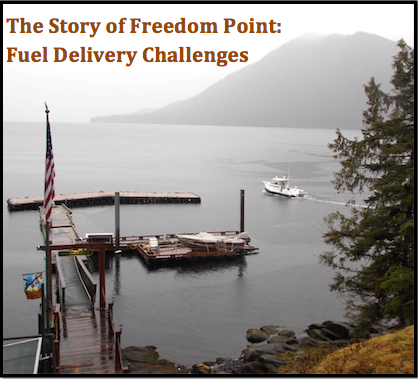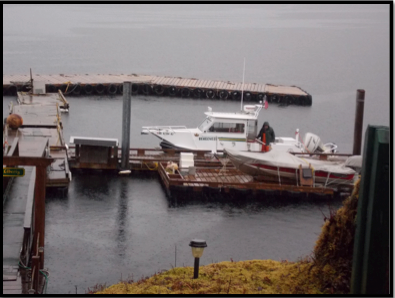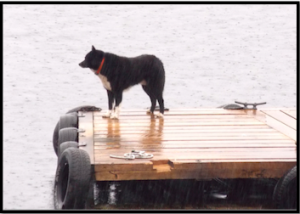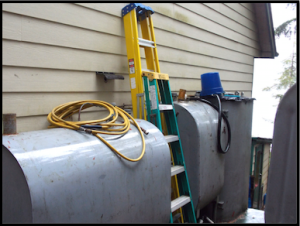 When you live off the grid and away from the road system to boot, getting supplies can be a real challenge. No matter how independent or self-sufficient your lifestyle is, there are certain things that you simply cannot produce yourself. Fuel to run a generator, engines, motors, and even the stove are all things that 99% of ‘off-griders’ must buy to keep things moving forward. Getting a ‘fuel delivery’ takes on a whole new meaning, too.
When you live off the grid and away from the road system to boot, getting supplies can be a real challenge. No matter how independent or self-sufficient your lifestyle is, there are certain things that you simply cannot produce yourself. Fuel to run a generator, engines, motors, and even the stove are all things that 99% of ‘off-griders’ must buy to keep things moving forward. Getting a ‘fuel delivery’ takes on a whole new meaning, too.
There are small communities dotting the Alaskan coastline all over the place that may see a fuel barge visit them once or twice a year but in most cases, people tend to haul their own fuel in skiffs and larger boats. Off-griders agree that the weather and the seasons rule everything and decide what you can and cannot get done that day but for Ed and Linda P of Freedom Point, the conditions and mood of the ocean also play a huge role in getting the supplies they need. In this installment of the Story of Freedom Point, they share with us how they handle getting their fuel ‘delivered’ from the docks to the tanks next to their house.

Though it is a typical rainy day for Southeast Alaska, the waters are calm and it seems like a good day to make a couple trips to haul fuel to the Freedom Point ‘tank farm.’
In the beginning, we brought fuel out in 5 gallon jerry jugs but that got old fast. Having to climb a ladder with each jug and pour it into our tanks was a task that had to be changed. As with anything in the bush, we had to figure it out on our own so we devised a pumping system to off load fuel from the boat and put it directly into our tanks at the top.
We can haul 110 gallons per trip in drums and it takes about an hour and a half per trip to fill up at the marina, run home and pump them off, then head out again for another load. We usually only make a couple trips a day now and just wait until the next to make a couple more. That way we are not too taxed with the job all at once. Today was one of those two trip days and tomorrow will finish off the job.
 Riley (our Freedom Point Bear Dog) loves to go in the boat, and is always ready to go along, so he and dad head out to make the ten mile run on the first trip. Upon our return, he always seems to think he must check out the area and see if anything has happened around here in his absence. When the first load was pumped off and I readied to make the second run, he was nowhere in sight…I left without him! “Curses….dad took off without me.” He ran out onto the docks and stared around the point wondering how the heck that just happened.
Riley (our Freedom Point Bear Dog) loves to go in the boat, and is always ready to go along, so he and dad head out to make the ten mile run on the first trip. Upon our return, he always seems to think he must check out the area and see if anything has happened around here in his absence. When the first load was pumped off and I readied to make the second run, he was nowhere in sight…I left without him! “Curses….dad took off without me.” He ran out onto the docks and stared around the point wondering how the heck that just happened.
Linda and I have a pretty good system worked out. She monitors the tanks with a portable radio and can communicate to me when she is ready to switch tanks with the filler nozzle. She also has an emergency valve that allows her to control the flow and close it completely when the switch is being made. I man the pumps and make sure the drums are completely empty. The pump off takes only about 15 minutes at high tide and a little longer if the tide is low [they have to work a little harder at low tide]. The two pumps in parallel make a pretty powerful flow.
 We plan to make another day of it and that will top off all our tanks that supply the generator as well as heat to the guest house/food storage area plus a small heating stove in the back area of the main house. That, coupled with the pellet stove, keeps us very comfortable and allows our outside food storage to remain warm and dry. With heat in the guest house, we can store canned foods as well as bulk staples that are rotated and transferred to our pantry in the house. A good supply of paper products are kept there as well.
We plan to make another day of it and that will top off all our tanks that supply the generator as well as heat to the guest house/food storage area plus a small heating stove in the back area of the main house. That, coupled with the pellet stove, keeps us very comfortable and allows our outside food storage to remain warm and dry. With heat in the guest house, we can store canned foods as well as bulk staples that are rotated and transferred to our pantry in the house. A good supply of paper products are kept there as well.
Once the pumping is completed and we are set for a good number of months, the pumps and hoses are stored and the dock cleared. I use one of the pumps to transfer fuel from one tank to another during the interim. It is a lot of work but worth every minute of it to live this amazing lifestyle!



